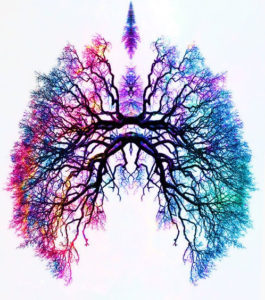 Epigenetic Clock Analysis in Long-term Meditators (Chaix et al., 2017)– By Michael Juberg
Epigenetic Clock Analysis in Long-term Meditators (Chaix et al., 2017)– By Michael Juberg
As the science turns to investigating the effects of long-term meditation practices on biological aging, a new study illuminates this relationship looking at DNA methylation in blood cells. Read more…

The Differential Moderating Roles of Self-Compassion and Mindfulness in Self-Stigma and Well-Being Among People Living with Mental Illness or HIV (Yang et al. 2016)– By Michael Juberg
The challenges of living with chronic and mental illnesses may also include the burden of self-stigmas, the unending repetition of negative self-beliefs and attitudes about the illnesses. Mindfulness and self-compassion may be one tool to target specific components of self-stigmas to improve well- being and life satisfaction. Read more…
The Power of Their Own Breath- By Mary Lide Parker
Hendrée Jones travels all over the world – from Brazil to Afghanistan to India – to teach mindfulness to mothers and children suffering from substance use disorders. Read more…
 Mind & Life Institute: International Symposium for Contemplative Studies 2016- Highlights and Review- By Michael Juberg
Mind & Life Institute: International Symposium for Contemplative Studies 2016- Highlights and Review- By Michael Juberg
The Mind & Life Institute help its International Symposium for Contemplative Studies in San Diego, California. This highly anticipated conference held every other year explores the intersection of applied and basic sciences and contemplative practices through a series of lectures, contemplative workshops, and poster presentations. Read the review here
 The Emerging Trend of Mindfulness in Education- By Annette Konoske-Graf
The Emerging Trend of Mindfulness in Education- By Annette Konoske-Graf
“Still, even then, I knew there was something to be said for that kind of self-awareness in the classroom. I didn’t quite know how to teach it, or even how to embody it. But I knew that my students could learn more if they could recognize their stress and control their breathing.” Read the article here
Neural Stress Reactivity Relates to Smoking Outcomes and Differentiates between Mindfulness and Cognitive Behavioral Treatment (Kober et al., 2016)
 According to the World Health Organization, cigarette smoking contributes to 5.4 million deaths per year and is the most preventable cause of morbidity and mortality in developed nations. While smoking rates are decreasing overall, approximately 1 in 5 Americans still continue to smoke. There is promising evidence that 70% of smokers would like to quit, but less than 5% of unassisted attempts at quitting are actually successful. Continue reading…
According to the World Health Organization, cigarette smoking contributes to 5.4 million deaths per year and is the most preventable cause of morbidity and mortality in developed nations. While smoking rates are decreasing overall, approximately 1 in 5 Americans still continue to smoke. There is promising evidence that 70% of smokers would like to quit, but less than 5% of unassisted attempts at quitting are actually successful. Continue reading…
Mindfulness-Based Relapse Prevention for Stimulant Dependent Adults: A Pilot Randomized Clinical Trial. (Glasner et al., 2016)
 In a recent pilot study by Suzette Glasner, Ph.D. and her team at the Integrated Substance Abuse Programs at the David Geffen School of Medicine at UCLA, they evaluated the effects of Mindfulness-Based Relapse Prevention (MBRP) on reducing relapse susceptibility among stimulant-dependent adults receiving a contingency management (CM) intervention. Continue reading…
In a recent pilot study by Suzette Glasner, Ph.D. and her team at the Integrated Substance Abuse Programs at the David Geffen School of Medicine at UCLA, they evaluated the effects of Mindfulness-Based Relapse Prevention (MBRP) on reducing relapse susceptibility among stimulant-dependent adults receiving a contingency management (CM) intervention. Continue reading…
 Long-term Mindfulness Training is Associated with Reliable Differences in Resting Respiration Rate. (Wielgosz et al., 2016)
Long-term Mindfulness Training is Associated with Reliable Differences in Resting Respiration Rate. (Wielgosz et al., 2016)
Scientists have studied respiration rate as an index of psychological well-being. In this study led by Joseph Wielgosz, M.A., and his team at the University of Wisconsin-Madison, they researched whether long-term meditation training was associated with enduring changes in resting respiration rate over an extended period of time. Continue reading…

Examination of Broad Symptom Improvement Resulting From Mindfulness-Based Stress Reduction in Breast Cancer Survivors: A Randomized Controlled Trial. (Lengacher et al., 2016)
One study estimates that there are almost 6 million breast cancer survivors in America alone (DeSantis et al. 2014). While breast cancer survivor rates are increasing, the focus turns to improving the quality of life (QOL) for these survivors. Continue reading…
